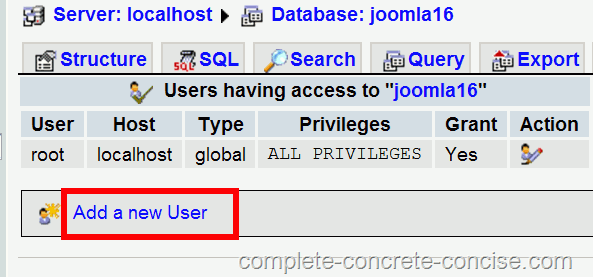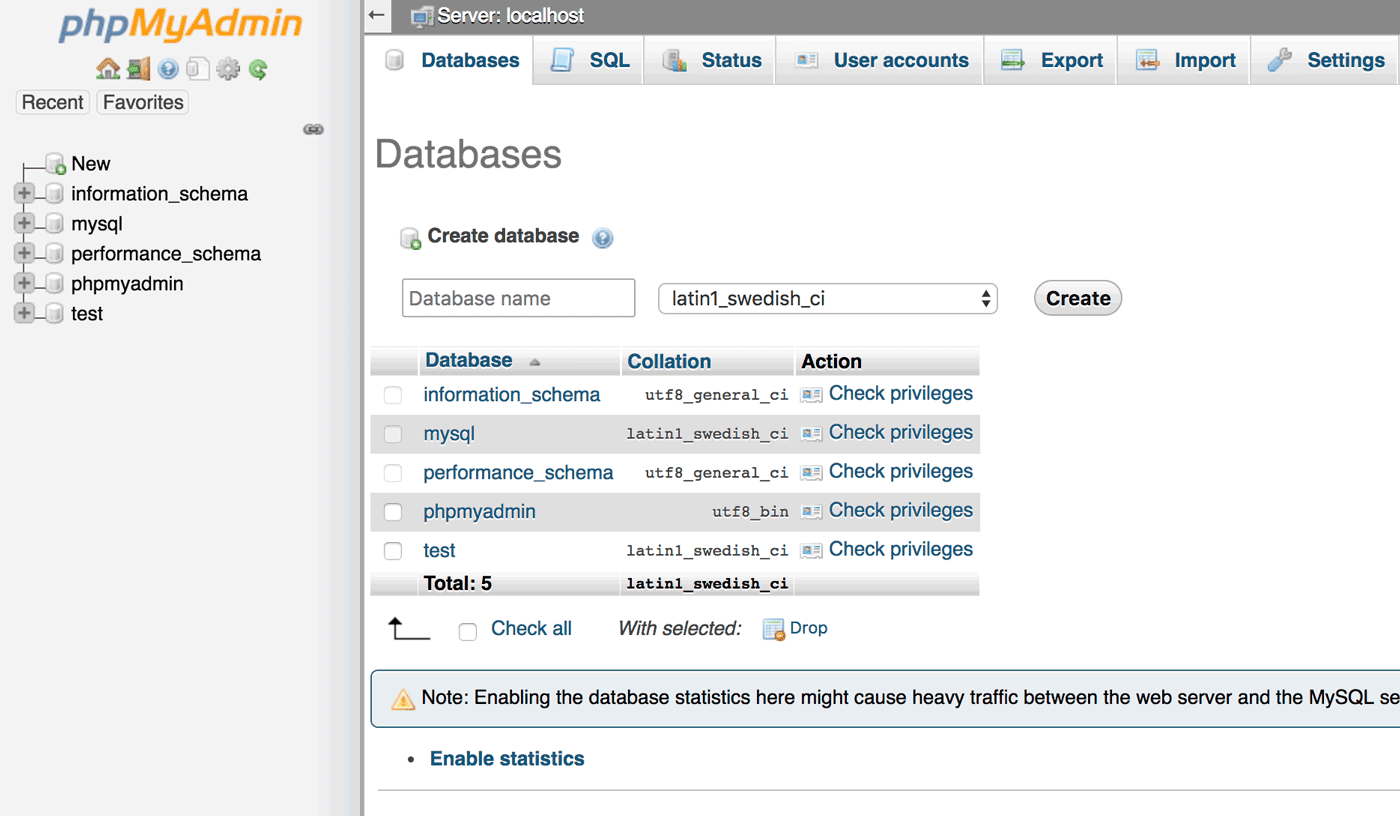
You can now use this user name and password instead of root and no password when you configure the database information for applications like Joomla! or WordPress. (6) Leave all other settings as they are. Alternatively, you can allow the system to generate a password for you (remember it or write it down, since you will need to pass that password on to applications that need it). If you don’t want the user to have a password (for the password to be blank) then select No Password from the dropdown box. Take a Look at some TemplateMonster Website Templates: Show more Show.

Phpmyadmin xampp create new user how to#
Password: if you want the user to have a password, then leave the selection in the dropdown box as Use text field and enter a password (up to 16 characters, composed of letters and / or digits) into the edit box on the right. This tutorial is going to explain you how to create new database user in PhpMyAdmin.

Host: since this is for XAMPP, select Local from the dropdown box. Enter database name, select collation (you may leave it to default) and click. It contains Apache, MySQL, MariaDB, PHP, and Perl. Example Login using username root and root password. It would probably be safest to restrict yourself to lowercase letters, uppercase letters, and / or digits. Description: XAMPP is free and open source web server solution stack. TO 'username''localhost' IDENTIFIED BY 'password' \q This command grants the user all permissions. The MySql documentation recommends using only ASCII characters in the name. To create a new mysql user in XAMPP you need to type the following commands: mysql -u root -p GRANT ALL PRIVILEGES ON. A user name may be a maximum of 16 characters in length. User Name: Leave the dropdown selection as Use text field and enter a user name in the edit box on the right side. (2) Select the database to which to add a new user by clicking on it: To create a new user account in MySQL, follow these steps: Access command line and enter MySQL server: mysql The script will return this result, which verifies that you are accessing a MySQL server. This will bring you to the phpmyadmin main page. The procedure should be the same for other versions of XAMPP.Ī XAMPP installation procedure for Windows XP can be found here.

This tutorial assumes that you have XAMPP 1.7.3 installed.


 0 kommentar(er)
0 kommentar(er)
